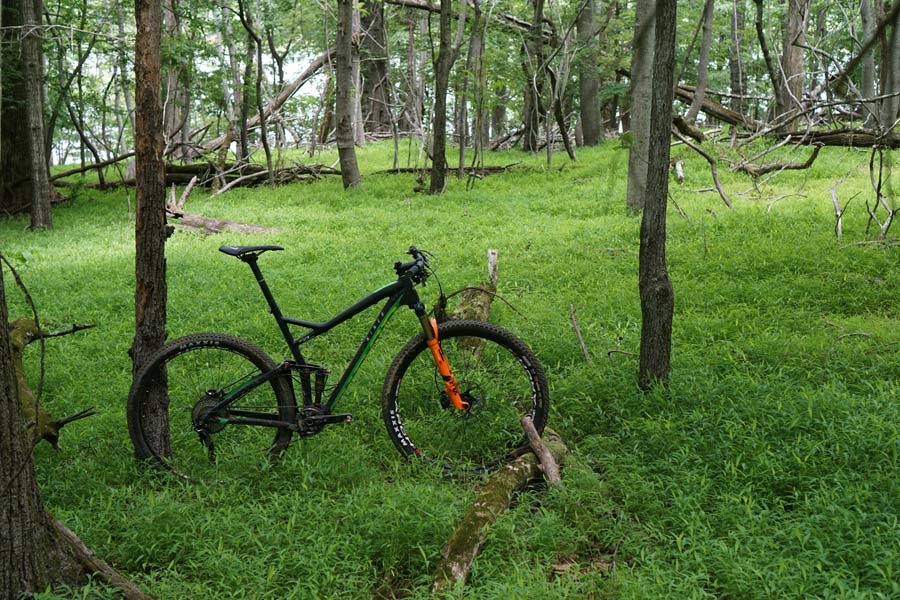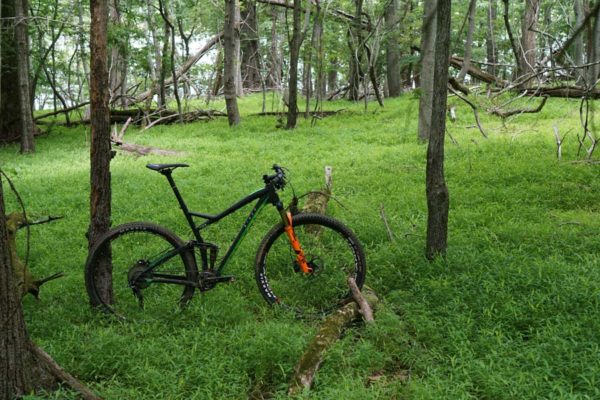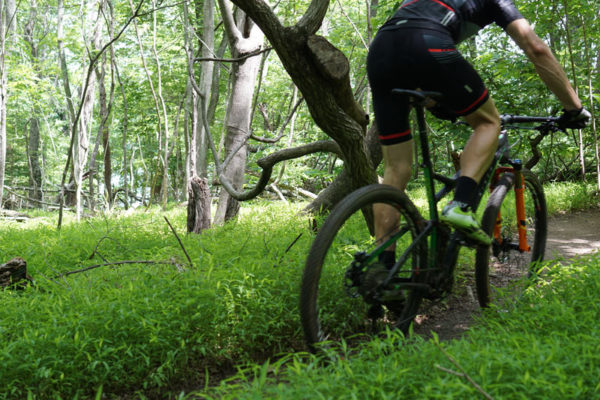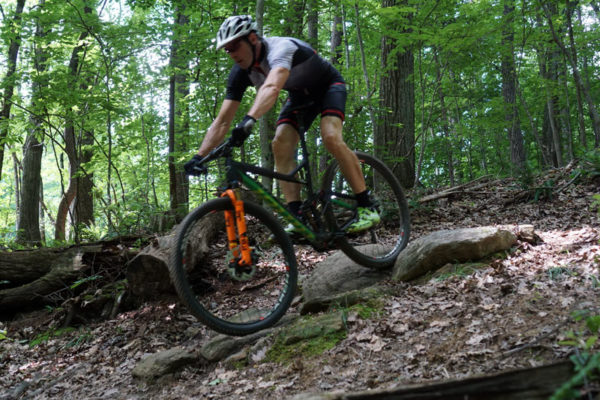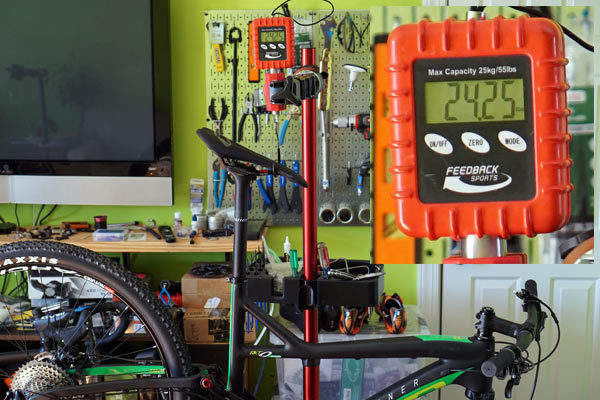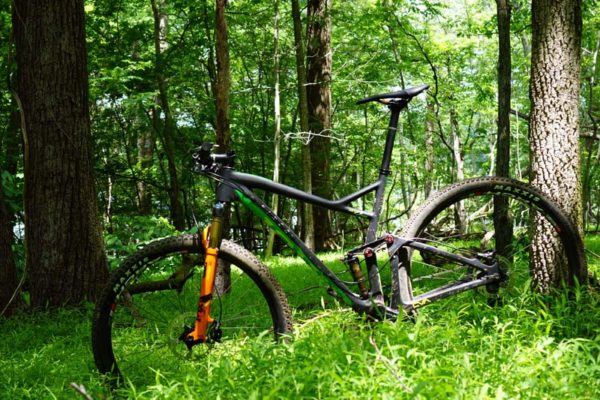After attending the informal launch party for the Niner RKT9 last summer, we got our own size Large in for testing on my home trails of Greensboro, NC. If ever there were a perfect full suspension bike for our very XC urban singletrack, the RKT9 should be it. On paper, the 90mm rear travel optimized around a 100mm fork should be all that’s needed without losing anything to the suspension. Admittedly, I’m a Niner fan and use the JET9 and RIP9 as test platforms for most every mountain bike component I test, but still, even I’ve been playing with running longer forks on both of those bikes their their original geo charts called for.
So, as luck would have it, the feathery Fox 32 SC fork arrived just about the same time as the bike, so I turned this into a very light full suspension race bike to see how fast I could rip through the trails…
Niner’s CVA suspension hasn’t changed much since it debuted, and for good reason – it works. Everyone I’ve let try my other Niners has been impressed, particularly when climbing. On the RKT9, that translates just as well to flat land sprinting or just sitting in and hammering through the trail.
But when it comes time to soak up the rough stuff, it swings into action. And, because the linkage is so efficient, I could leave the Fox rear shock fully open 95% of the time, allowing it to swing into action very quickly. Ninety millimeters is plenty effective at smoothing out the little roots and rocks found on XC-type trails.
Where the design comes up short, literally, can be in the headtube. Designed with a shorter headtube their the 100mm/100mm travel JET9, the RKT9 was made to let racers keep the front end really low for a very aggressive riding position. And it works, except when I came to steeper descents or drops. The low front end, slightly shorter top tube layout and flat handlebar meant my upper body mass wanted to go forward over the bars. Or, more accurately, it was harder to get my body back far enough to feel really stable on the steep downhill stuff because of the relatively high seatpost.
With my JET9, the slightly taller headtube means I’m able to get behind the saddle just a bit easier. With the shorter headtube on the RKT, it makes it a bit tougher. So, if I knew I were going to a trail with a lot of steep descending, I’d add a dropper post. But given the XC race intentions of this bike, I tested it only with Niner’s rigid RDO carbon seatpost.
All that said, it’s a minor quibble considering the overall performance is rock solid. The frame is very stiff, which translates into predictable handling and near perfect power transfer. Stability throughout the corners was exactly what I’d want, even with lighter Stan’s NoTubes Arch wheels. That handling is probably a combination of the stiff frame and the wider Boost axle spacing allowing for a stiffer wheel build.
With the Fox 32 SC, the complete bike (sans pedals) came in at 24.25lb (10.99kg) with tubeless tires.
We’ve seen the UCI World Cup XC race courses getting rougher over the past few years, and more riders putting full suspension bikes into their stable for tackling that terrain. For those not required to ride a certain label, I suspect the Niner RKT9 would make a darn near perfect bike for any level of XC racing.
I tested the $5,500 3-Star build with XT 1×11 group and a Fox Factory 32 fork and 3-position air shock with rebound adjust. That one sits in the middle of the complete bike lineup for this model and provided the expected smooth shifting and solid braking XT is known for. Everything else held up perfectly well, too -tires, wheels, cockpit- making this a good option for most riders wanting a really well equipped race bike. FWIW, I swapped the fork for the entirety of my test, but it, too, was a perfect upgrade for XC racing.
